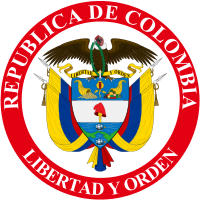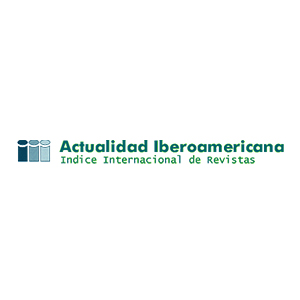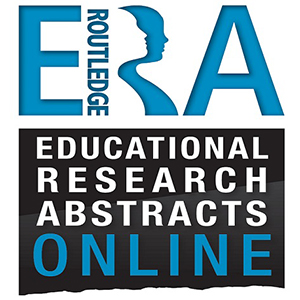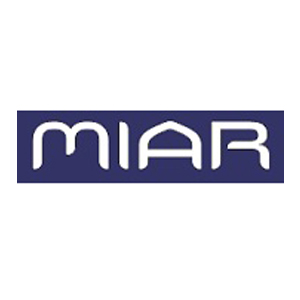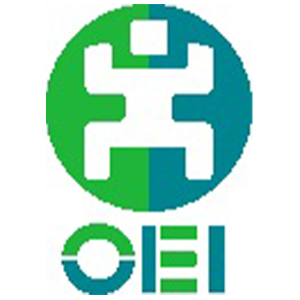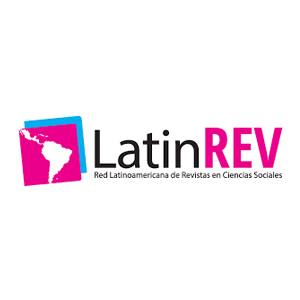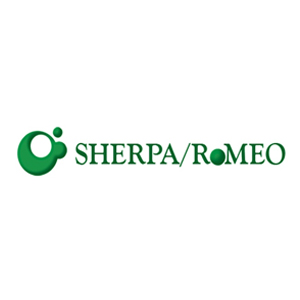La educación ambiental en los espacios no convencionales de educación que gerencian las entidades que conforman el sector ambiental de Bogotá: avance de un estado del arte
Environmental Education in Non-conventional Spaces of Education Managed by Bogota Environment Offices: Advance of a State of Art
Esta comunicación hace parte de la primera fase de un proyecto de investigación del Doctorado Interinstitucional en Educación de la Universidad Distrital Francisco José de Caldas, que referencia el avance del estado del arte planteado con el fin de establecer antecedentes y elementos de justificación de los problemas educativos identificados. Este proyecto indaga sobre la forma como se asume y se implementa la educación ambiental (EA) en los espacios no convencionales de educación gerenciados por las entidades que conforman el sector ambiental de Bogotá (Jardín Botánico y Secretaría Distrital de Ambiente), y en el estado del arte se aborda la pregunta: ¿Qué se sabe sobre el objeto de estudio?, y se presenta un avance a partir de la ruta establecida en la línea de investigación “Inclusión de la dimensión ambiental en la Educación en Ciencias del Doctorado”. El proyecto en mención no solo se concibe desde un eje de investigación reciente y poco explorado, sino que permite concebir la reflexión desde un contexto más local y específico, como lo son las entidades que conforman dicho sector, responsables de liderar la formulación de políticas, la gestión y la EA en el Distrito Capital; de igual manera, intentará establecer relaciones entre las formas de asumir e implementar la EA en el ámbito de lo formal y lo informal y la posible emergencia de una didáctica ambiental para dichos espacios.
educación ambiental, educación en ciencias, jardines botánicos (es)
- Ainsworth, H. & Eaton, S. (2010). Formal, Non-Formal and Informal Learning in the Sciences. Canada: Heather Ainsworth and Sarah Eaton.
- Ampuero, D., Miranda, C. E., Delgado, L. E., Goyen, S., & Weaver, S. (2015). Empathy and critical thinking: Primary students solving local environmental problems through outdoor learning. Journal of Adventure Education and Outdoor Learning, 15 (1), 64-78.
- Anderson, R. & Tate, S. (2014). I Like the Red Plants: Children’s Perceptions of their Local Natural Environments in Australia and Singapore. Procedia - Social and Behavioral Sciences, 141 (25), 940-950.
- Angulo, F., Zapata, L., Soto, C. A., Quintero, S. M.,Ceballos, A. F., Cardona, F., & Cifuentes, L. J. (2012). Do the workshops at the science museum contribute to promote attitudes toward environmental conservation? [¿Contribuyen los talleres en el museo de ciencias a fomentar actitudes hacia la conservación del ambiente?]. Enseñanza de las Ciencias, 30 (3), 53-70.
- Arslan, S. (2012). The Influence of Environment Education on Critical Thinking and Environmental Attitude. Procedia - Social and Behavioral Sciences, 55 (5), 902-909.
- Auladi, I. R. (2013). Mangrove conservation: Reconstructing formal, informal and non-formal environmental education in order to foster the development of a creative economy in Indonesia. International Journal of Green Economics, 7 (1), 71-85.
- Ballantyne, R., Packer, J., & Hughes, K. (2008).Environmental awareness, interests and motives of botanic gardens visitors: Implications for interpretive practice. Tourism Management, 29 (3), 439-444.
- Bathgate, M. E., Schunn, C. D., & Correnti, R. (2014). Children’s motivation toward science across contexts, manner of interaction, and topic. Science Education, 98 (2), 189-215.
- Betancourt, J. (2013). De educación no formal, museos, modelos y sentidos. En: Parque Explora. El Museo y la Escuela: Conversaciones de Complemento, 91-100. Medellín.
- Bevan, B. (2010). Being, doing, knowing, and becoming: Science and opportunities for learning in the out-ofschool-time setting (Order No. 3423930). Available from ProQuest Education Journals (761447157).
- Bonney, R., et al. (2009). Public Participation in Scientific Research: Defining the Field and Assessing Its Potential for Informal Science Education. Washington D.C.: Center for advancement of informal science education, CAISE.
- Boustedt, J., Eckerdal, A., McCartney, R., Sanders, K., Thomas, L., & Zander, C. (2011). Students’ perceptions of the differences between formal and informal learning. Paper presented at the ICER’11-Proceedings of the ACM SIGCSE 2011 International Computing Education Research Workshop, 61-68.
- Bown, M. (1985). The Ecology of Knowledge: Linking the Natural and Social Sciences. Revista Geoforum, 16 (2), 213-225.Braus, J. & Wood, D. (1998). Educación Ambiental en las Escuelas: Creando una Programa que Funcione. (Environmental Education in the Schools: Creating a Program That Works!). Columbus. OH: Centro de Información de Recursos Educativos para la Ciencia, las matemáticas y la Educación Ambiental.
- Burek, K. J. (2012). The impact of socioscientific issues based curriculum involving environmental outdoor education for fourth grade students. Available from ERIC (1651840499; ED549827).
- Byrd, R. K., Haque, M. T., Tai, L., McLellan, G. K., & Knight, E. J. (2007). Designing a children’s water garden as an outdoor learning lab for environmental education. Applied Environmental Education and Communication, 6 (1), 39-47.
- Cambre, M. (2013). Análisis de los museos y su inserción dentro de la educación uruguaya. En: Parque Explora. El Museo y la Escuela: Conversaciones de Complemento. 79-85. Medellín.
- Carrier, S. J., Tugurian, L. P., & Thomson, M. M. (2013). Elementary science indoors and out: Teachers, time, and testing. Research in Science Education, 43 (5), 2059-2083.
- Chen, N., & Liu, J. (2015). A study of connection between informal and formal science education. Asia-Pacific Forum on Science Learning and Teaching, 15 (2). Retrieved from www.scopus.co
- Costel, E. (2015). Didactic Options for the Environmental Education. Procedia-Social and Behavioral Sciences, 180 (5), 1380-1385.
- Cox-Petersen, A. M., Marsh, D., Kisiel, J., & Melber, L. M.(2003). Investigation of guided school tours, student learning, and science reform recommendations at a museum of natural history. Journal of Research in Science Teaching, 40 (2), 200-218.
- Darkwa, S. (2011). Research article: Environmental justice education: Empowering ghanaian students to become environmental citizens. Environmental Practice, 13 (4), 314-324.
- Dawson, E. (2014). Equity in informal science education: Developing an access and equity framework for science museums and science centers. Studies in Science Education, 50 (2), 209-247.
- Dori, Y. J., & Tal, R. T. (2000). Formal and informal collaborative projects: Engaging in industry with environmental awareness. Science Education, 84 (1), 95-113.
- Drissner, J. R., Haase, H., Wittig, S. & Hille, K. (2014).Short-term environmental education: Long-term effectiveness? Journal of Biological Education, 48 (1), 9-15.
- Eshach, H. (2007). Bridging in-school and out-of-school learning: Formal, non-formal, and informal education. Journal of Science Education and Technology, 16 (2), 171-190.
- Faggi, A., da Costa, M. L. M. N., Pereira, T. S., Balcázar Sol, T., & Mejía, M. (2012). Latin american and caribbean botanic gardens: Advances and challenges at national and regional levels. Plant Ecology and Diversity, 5 (2), 259-263.
- Fallik, O., Rosenfeld, S., & Eylon, B. (2013). School and out-of-school science: A model for bridging the gap. Studies in Science Education, 49 (1), 69-91.
- Falomo, L., & Albanesi, G. (2015). Cross fertilization between museums and schools, science and art, history and multimedia. Interchange. Science and Education, 18 (2), 421-483.
- Filippoupoliti, A., & Koliopoulos, D. (2014). Informal and non-formal education: An outline of history of science in museums. Science and Education, 23 (4), 781-791.
- Ford, K. (2011). Inquiry learning: Students’ perception of light wave phenomena in an informal environment (Order No. 3487333). Available from ProQuest Education Journals (912740938).
- Friedman, A. J., & Mappen, E. F. (2012). Formal/informal science learning through civic engagement:Both sides of the education equation. Retrieved from www.scopus.com
- Frisch, J. K., Unwin, M. M., & Saunders, G. W. (2010). Name that plant! Overcoming plant blindness and developing a sense of place using science and environmental education. Retrieved from www.scopus.com
- Gangadhar, B. D. (2001). Multipurpose museums for environmental education. Ecology, Environment and Conservation, 7 (4), 481-484.
- Giovanna, S., Carrie, T., Philip, B., Shari, R., & Angela, C. B. (2010). Understanding the role of place in environmental education across settings. Paper presented at the Learning in the Disciplines: ICLS 2010 Conference Proceedings-9th International Conference of the Learning Sciences, 2 195-202. Retrieved from www.scopus.com
- Gough, A. (2008). Towards more effective learning for sustainability: reconceptualising science education. Transnational Curriculum Inquiry, 5 (1), 32-50.
- Gough, A. (2013). The Emergence of Environmental Education Research: A “History” of the Field. International Handbook of Research on Environmental Education. New York: American Educational Research Association (AERA), 13-22.
- Gough, S., Walker K., & Scott, W. (2001). Lifelong Learning: Towards a Theory of Practice for Formal and Non-Formal Environmental Education and Training. Canadian Journal of Environmental Education, 6, 178-196.
- Güler, T. (2009). The effects of an ecology based environmental education on teachers’ opinions about environmental education. Egitim Ve Bilim, 34 (151), 30-43.
- Hadzigeorgiou, Y., & Skoumios, M. (2013). The development of environmental awareness through school science: Problems and possibilities. International Journal of Environmental and Science Education, 8 (3), 405-426.
- Hamalosmanoglua, M. (2012). The Place of Environmental Education in Science Education Curricula in Turkey. Procedia-Social and Behavioral Sciences, 46, 4839-4844.
- Hassan, A., & Pudin, S. (2011). The informal environmental education value practices among adults in Sabah, Malaysia. Journal of Turkish Science Education, 8 (1), 19-28.
- He, H., & Chen, J. (2012). Educational and enjoyment benefits of visitor education centers at botanical gardens. Biological Conservation, 149 (1), 103-112.
- Heimlich, J. (1993a). Nonformal Environmental Education: Toward a Working Definition. Columbus. OH: Centro de Información de Recursos Educativos para la Ciencia, las matemáticas y la Educación Ambiental.
- Heimlich, J. (2010b). Environmental education evaluation:
Reinterpreting education as a strategy for meeting mission. Evaluation and Program Planning, 33, 180-185.
- Her Majesty’s Inspectorate of Education (2007). Review of the Contribution of the Scottish Science Centers Network to Formal and Informal Science Education. London: HMIE.
- Ibrahim, N. & Fadzil, N. H. (2013). Informal Setting for Learning on Campus: Usage and Preference. Procedia-Social and Behavioral Sciences, 105 (3), 344-351.
- Jackson, P. & Sutherland, L. (2013). Role of Botanic Gardens. Encyclopedia of Biodiversity (Second Edition), 504-521.
- JBJCM (2014). Informe de Gestión. Recuperado de http://www.jbb.gov.co/jardin/institucional-inicio/informes-e-indicadores- de-gestion
- Jeronen, E., Jeronen, J. & Raustia, H. (2009). Environmental Education in Finland -A Case Study of Environmental Education in Nature Schools.
- International Journal of Environmental and Science Education, 4 (1), 1-23.
- Jidesjö, A., Danielsson, A., & Björn, A. (2015). Interest and Recruitment in Science: A Reform, Gender and Experience Perspective. Procedia-Social and Behavioral Sciences, 167 (8), 211-216.
- Kisiel, J. F. (2014). Clarifying the complexities of school-museum interactions: Perspectives from two communities. Journal of Research in Science Teaching, 51 (3), 342-367.
- Kondrat, H., & Maciel, M. D. (2013). Environmental education for primary and secondary education: Contributions to citizenship and sustainability development. Revista Brasileira De Educacao, 18 (55), 825-846.
- Labintah, S. & Shinozaki, M. (2014). Children Drawing: Interpreting School-group Student’s Learning and Preferences in Environmental Education Program at TanjungPiai National Park, Johor Malaysia. Procedia-Social and Behavioral Sciences, 116 (21), 3765-3770.
- Langhi, R., & Nardi, R. (2009). Astronomy education in brazil: Formal, informal, non-formal education, scientific popularization. [Ensino da astronomia no Brasil: educação formal, informal, não formal e divulgação científica]. Revista Brasileira De Ensino De Fisica, 31 (4), 4402.1-4402.11. Retrieved from www.scopus.com
- Le Hebel, F., Montpied, P., & Fontanieu, V. (2014). What can influence students’ environmental attitudes? Results from a study of 15-year-old students in France. International Journal of Environmental and Science Education, 9 (3), 329-345.
- Liu, X. (2009). Beyond Science Literacy: Science and the Public. International Journal of Environmental and Science Education, 4 (3), 301-311.
- Lord, J. (2011). The contribution of environmental studies curricula to environmental decision making (Order No. 3468988). Available from ProQuest Education Journals (889922336).
- Loredana, S. (2013). Formal, Non-formal, informal in Education. Procedia - Social and Behavioral Sciences, 76, (15), 821-826.
- Loukia M. & Kotsaki, A. (2015). The Museum Culture as a Means of Conjunction of the Urban and Rural Environment. Procedia - Social and Behavioral Sciences, 175 (12), 601-606.
- Lückmann, K., Lagemann, V., & Menzel, S. (2013). Landscape assessment and evaluation of young people: Comparing nature-orientated habitat and engineered habitat preferences. Environment and Behavior, 45 (1), 86-112.
- Lyon, G. H. (2010). Project exploration’s personalized curriculum: Fostering access and equity in science out-of-school. Available from ERIC (881455748; ED520596).
- Marcinkowski, T., Bucheit, J., Spero-Swingle, V.,Linsenbardt, C., Zngelhardt, J., Stadel, M., Santangelo, R., & Guzmon, K. (2013). Selected Trends in Thirty Years of Doctoral Research in Environmental Education in Dissertation Abstracts International from Collections Prepared in the United States of America. International Handbook of Research on Environmental Education. New York: American Educational Research Association (AERA), 45-62.
- Miele, E., Shanley, D. & Steiner, R. (2010). Online Teacher Education: A Formal-Informal Partnership between Brooklyn College and the American Museum of Natural History. New Educator, 6 (3-4), 247-264.
- Mitchell, I. K., Ling, C., Krusekopf, C., & Kerr, S. (2015). Pathways toward whole community transformation: A case study on the role of school engagement and environmental education. Environment, Development and Sustainability, 17 (2), 279-298.
- Morag, O., Tal, T., & Rotem-Keren, T. (2013). Long-term educational programs in nature parks: Characteristics, outcomes and challenges. International Journal of Environmental and Science Education, 8 (3), 427-449.
- Morgan, S., Hamilton, S., Bentley, M., & Myrie, S. (2009). Environmental education in botanic gardens: Exploring Brooklyn botanic garden’s project green reach. Journal of Environmental Education, 40 (4), 35-52.
- Nakagawa, Y., & Payne, P. G. (2015). Critical place as a fluid margin in post-critical environmental education. Environmental Education Research, 21 (2), 149-172.
- Nazir, J., & Pedretti, E. (2015). Educators’ perceptions of bringing students to environmental consciousness through engaging outdoor experiences. Environmental Education Research, 33 (2), 126-146.
- Nicol, R. (2014a). Fostering environmental action through outdoor education. Educational Action Research, 22 (1), 39-56.
- Nicol, R. (2014b). Entering the fray: The role of outdoor education in providing nature-based experiences that matter. Educational Philosophy and Theory, 46 (5), 449-461.
- Nix, M. (2008). An analysis of differences of post artwork scores between a science intervention in a traditional classroom versus an intervention in an outdoor environment (Order No. 3338608). Available from ProQuest Education Journals. (304608030). Retrieved from http://search.proquest.com/docview/304608030?accountid=34687
- Novo, M. (1996). La Educación Ambiental formal y no formal: dos sistemas complementarios. Revista Iberoamericana de Educación, 11, 75-102.
- Öllerer, K. (2012). Environmental education-between necessity and opportunity. [Educa?iaecologic?-Intrenecesitate?ioportunitate].Calitatea Vietii, 1,25-44.
- O’Mahony, T. K. (2010). Connecting formal and informal learning experiences (Order No. 3443201). Available from ProQuest Education Journals (854983210). Retrieved from http://search.proquest.com/docview/854983210?accountid=34687
- Öztürk, ?. (2009). Outdoor education/outdoor environmental education. Milli Egitim,181, 131-145.
- Pedretti, E., Nazir, J., Tan, M., Bellomo, K., & Ayyavoo, G. (2012). A Baseline Study of Ontario Teachers’ Views of Environmental and Outdoor Education. Pathways: The Ontario Journal of Outdoor Education, 24 (2), 4-12.
- Preston, L. (2011a). Green pedagogy - guidance and doubt in teaching outdoor and environmental education. Asia-Pacific Journal of Teacher Education, 39 (4), 367-380. Retrieved from www.scopus.com
- Preston, L. (2011b). Sustaining an environmental ethic: Outdoor and environmental education graduates’ negotiation of school spaces. Australian Journal of Environmental Education, 27 (2), 199-208. Retrieved from www.scopus.com
- Preston, L. (2012). Changing green subjectivities in outdoor and environmental education: A qualitative study. Discourse, 33 (2), 235-249. Retrieved from www.scopus.com
- Preston, L. (2014). Students’ imaginings of spaces of learningin outdoor and environmental education. Journal of Adventure Education and Outdoor Learning, 14 (2), 172-190. Retrieved from www.scopus.com
- Pumpian, I., Fisher, D., & Wachowiak, S. (2005). Challenging the classroom standard through museum-based education: School in the park. Retrieved from www.scopus.com
- Rai Singh, H. & Abdul Rahman, S. (2012). An Approach for Environmental Education by Non-Governmental Organizations (NGOs) in Biodiversity Conservation. Procedia-Social and Behavioral Sciences, 42,144-152.
- Reid, A. & Scott, W. (2013). Identifying Needs in Environmental Education Research. International Handbook of Research on Environmental Education. New York: American Educational Research Association (AERA), 519-528.
- Reis, G. (2008). On and off school ground: A discursive approach to science and environmental education (Order No. NR41206). Available from ProQuest Education Journals (304436509). Retrieved from http://search.proquest.com/docview/304436509?accountid=34687
- Reynoso, E. (2013). Los museos de ciencia en la sociedad de la información y el conocimiento. En: Parque Explora. El Museo y la Escuela: Conversaciones de Complemento, 27-34. Medellín.
- Riedinger, K., Marbach-Ad, G., McGinnis, J. R., Hestness, E., & Pease, R. (2011). Transforming elementary science teacher education by bridging formal and informal science education in an innovative science methods course. Journal of Science Education and Technology, 20 (1), 51-64.
- Rios, J. M., & Brewer, J. (2014). Outdoor education and science achievement. Applied Environmental Education and Communication, 13 (4), 234-240.
- Rivera M. & Brotman, J. (2010). Teaching Science in the City: Exploring Linkages between Teacher Learning and Student Learning across Formal and Informal Contexts. New Educator, 6 (3-4), 196-211.
- Robert B. & Robottom, I. (2013). Critical Action Research and Environmental Education: Conceptual Congruencies and Imperatives in Practice. International Handbook of Research on Environmental Education. New York: American Educational Research Association (AERA), 469-479.
- Sánchez-Cardona, I., Sánchez-Lugo, J., & Vélez-Gonzá-lez, J. (2012). Exploring the Potential of Communities of Practice for Learning and Collaboration in a Higher Education Context. Procedia-Social and Behavioral Sciences, 46, 1820-1825.
- Sánchez, M. (2013). La relación Museo-Escuela: tres décadas de investigación educativa. En: Parque Explora. El Museo y la Escuela: Conversaciones de Complemento, 15-22. Medellín.
- Sandell, K., & Öhman, J. (2013). An educational tool for outdoor education and environmental concern. Journal of Adventure Education and Outdoor Learning, 13 (1), 36-55.
- Sanders, D. L. (2007). Making public the private life of plants: The contribution of informal learning environments. International Journal of Science Education, 29 (10), 1209-1228.
- Schlottmann, C. (2009). The conceptual foundations of environmental education: Towards a broad theory of environmental moral education (Order No. 3346269). Available from ProQuest Education Journals (304960041). Retrieved from http://search.proquest.com/docview/304960041?accountid=34687
- SDA (2014). Proyecto 131 Participación ciudadana y educación ambiental como instrumentos de gestión para la apropiación social de los territorios ambientales del Distrito Capital. Recuperado de http://ambientebogota.gov.co/es/documentos-de-formulacion
- Sellmann, D., & Bogner, F. X. (2013a). Climate change education: Quantitatively assessing the impact of a botanical garden as an informal learning environment. Environmental Education Research, 19 (4), 415-429.
- Sellmann, D., & Bogner, F. X. (2013b). Effects of a 1-day environmental education intervention on environmental attitudes and connectedness with nature. European Journal of Psychology of Education, 28 (3), 1077-1086.
- Seyedehzahra, M. et al. (2011). Developing Conducive Sustainable Outdoor Learning: The Impact of Natural environment on Learning, Social and Emotional Intelligence. The 2nd International Building Control Conference 2011 Developing, Procedia Engineering, 20, 389-396.
- Sondergeld, T. A., Milner, A. R., & Rop, C. (2014). Evaluating teachers’ self-perceptions of their knowledge and practice after participating in an environmental education professional development program. Teacher Development, 18 (3), 281-302.
- Soto, C., Angulo, F., & Botero, N. (2013). Relaciones de complementariedad Museo-Escuela: una mirada desde cuatro instituciones museísticas de Medellín. En: Parque Explora. El Museo y la Escuela: Conversaciones de Complemento, 53-58. Medellín.
- Soykan, A. & Atasoy. E. (2012). Historical Development of Non-Formal Environmental Education in Turkey. Procedia-Social and Behavioral Sciences, 46, 736-743.
- Srbinovskia, M. et al. (2014). Didactic Preconditions for Environmental Education in the Macedonian Secondary Schools. 5th World Conference Educational Sciences 2013-WCES 2013. Procedia-Social and Behavioral Sciences, 116, 88 -94.
- Steele, A. (2011). Beyond contradiction: Exploring the work of secondary science teachers as they embed environmental education in curricula. International Journal of Environmental and Science Education, 6 (1), 1-22.
- Stubbs, H. S., Fowler, K., Ball, J., Singh, N., Whitaker, D., & Hawley, B. (2003). Educational environmental projects, using technology applications, for middle school students in formal and non-formal settings. Meridian, 6 (2). Retrieved from www.scopus.com Tal, T., & Morag, O. (2013). A longitudinal study of environmental and outdoor education: A cultural change. Journal of Research in Science Teaching, 50 (9), 1019-1046.
- Tampoukou, A., Papafotiou, M., Koutsouris, A., & Paraskevopoulou, A. T. (2015). Teachers’ perceptions ?n the use of botanic gardens as a means of environmental education in schools and the enhancement of school student benefits from botanic garden visits. Landscape Research, 40 (5), 610-620.
- Taskin, O. (2003). Environmental Education: New Era for Science Education. Hoosiers Association for Science Teachers (HASTI) Convention, Indianapolis, 19-21.
- Tavares, A. et al. (2014). Inquire at Coimbra botanic garden: Products and process of an IBSE educative project. 5th World Conference on Educational Sciences-WCES 2013. Procedia-Social and Behavioral Sciences, 116, 4353-4356.
- Tuan Soh, T. M., & MohdMeerah, T. S. (2013). Outdoor education: An alternative approach in teaching and learning science. Asian Social Science, 9 (16 SPL).
- Vick, M. & Garvey, M. (2011). Levels of Cognitive Processes in a Non-Formal Science Education Program: Scouting’s Science Merit Badges and the Revised Bloom’s Taxonomy. International Journal of Environmental and Science Education, 6 (2), 173-190.
- Wassenberg, C. L., Goldenberg, M. A., & Soule, K. E. (2015). Benefits of botanical garden visitation: A means-end study. Urban Forestry and Urban Greening, 14 (1), 148-155.
- Weinstein, M. & Ruble, E. (2011). Can Formal-Informal Collaborations Improve Science Literacy in Urban Middle Schools? The Impact of Urban Advantage. Institute for Education and Social Policy, 3 (11), 1-10.
- Weinstein, M., Whitesell, E. R., & Schwartz, A. E. (2014). Museums, zoos, and gardens: How formal-informal partnerships can impact urban students’ performance in science. Evaluation Review, 38 (6), 514.
- Wiegand, F., Kubisch, A., & Heyne, T. (2013). Out-ofschool learning in the botanical garden: Guided or self-determined learning at workstations? Studies in Educational Evaluation, 39 (3), 161-168.
- Williams, S. J., Jones, J. P. G., Gibbons, J. M., & Clubbe, C. (2015). Botanic gardens can positively influence visitors’ environmental attitudes. Biodiversity and Conservation, 6 (2), 139-143.
- Wójcik, A. M. (2004). Informal environmental education in Poland. International Research in Geographical and Environmental Education, 13 (3), 291-298.
- Wolff, B. (2008). Environmental Studies and Utilitarian Ethics. Bioscene: Journal of College Biology Teaching, 34 (2), 6-11.
- Yavuz, M. & Balkan, F. (2013). Teachers’ Opinions Regarding the Effects of the Usage of out-of-school Learning Environments on Students’ Academic Achievement and Anxiety towards Science. Procedia - Social and Behavioral Sciences, 106, (10), 2532-2540.
- Zambrano. A. et al. (2013). Las líneas de investigación en Educación en Ciencias en Colombia. EDUCyT, (7), 134-148
APA
ACM
ACS
ABNT
Chicago
Harvard
IEEE
MLA
Turabian
Vancouver
Descargar cita
Citaciones

1. Yaquelin Nayibe Bonilla-Mendoza, Isabel Garzón-Barragán. (2021). Algunas características del contexto ambiental del colegio Tabora para proyectar la formación ecociudadana de estudiantes de grado quinto. Tecné, Episteme y Didaxis: TED, (51) https://doi.org/10.17227/ted.num51-11916.
Métricas PlumX
Visitas
Descargas
Licencia
Derechos de autor 2017 Bio-grafia

Esta obra está bajo una licencia internacional Creative Commons Atribución-NoComercial 4.0.
Todo el trabajo debe ser original e inédito. La presentación de un artículo para publicación implica que el autor ha dado su consentimiento para que el artículo se reproduzca en cualquier momento y en cualquier forma que la revista Bio-grafía considere apropiada. Los artículos son responsabilidad exclusiva de los autores y no necesariamente representan la opinión de la revista, ni de su editor. La recepción de un artículo no implicará ningún compromiso de la revista Bio-grafía para su publicación. Sin embargo, de ser aceptado los autores cederán sus derechos patrimoniales a la Universidad Pedagógica Nacional para los fines pertinentes de reproducción, edición, distribución, exhibición y comunicación en Colombia y fuera de este país por medios impresos, electrónicos, CD ROM, Internet o cualquier otro medio conocido o por conocer. Los asuntos legales que puedan surgir luego de la publicación de los materiales en la revista son responsabilidad total de los autores. Cualquier artículo de esta revista se puede usar y citar siempre que se haga referencia a él correctamente.

